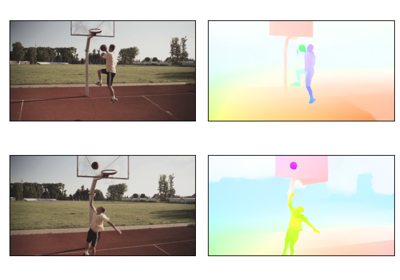read_video
- torchvision.io.read_video(filename: str, start_pts: Union[float, Fraction] = 0, end_pts: Optional[Union[float, Fraction]] = None, pts_unit: str = 'pts', output_format: str = 'THWC') Tuple[Tensor, Tensor, Dict[str, Any]][source]
Reads a video from a file, returning both the video frames as well as the audio frames
- Parameters:
filename (str) – path to the video file
start_pts (python:int if pts_unit = 'pts', python:float / Fraction if pts_unit = 'sec', optional) – The start presentation time of the video
end_pts (python:int if pts_unit = 'pts', python:float / Fraction if pts_unit = 'sec', optional) – The end presentation time
pts_unit (str, optional) – unit in which start_pts and end_pts values will be interpreted, either ‘pts’ or ‘sec’. Defaults to ‘pts’.
output_format (str, optional) – The format of the output video tensors. Can be either “THWC” (default) or “TCHW”.
- Returns:
the T video frames aframes (Tensor[K, L]): the audio frames, where K is the number of channels and L is the number of points info (Dict): metadata for the video and audio. Can contain the fields video_fps (float) and audio_fps (int)
- Return type:
vframes (Tensor[T, H, W, C] or Tensor[T, C, H, W])
Examples using
read_video:
Optical Flow: Predicting movement with the RAFT model
Optical Flow: Predicting movement with the RAFT model
